If there was any fruit that identified most with Southern California, that icon of buttery goodness would be the avocado.
And out there, the king of avocados is the Hass. Once an obscure cultivar, it now accounts for 80 percent of the world’s avocado crop and 90 percent of California’s avocado crop, where San Diego leads the way with the highest number of orchards.
We all know that when we buy avocados at the store, they’re usually hard and unripe but begin to soften a couple days after bringing them home.
If you grow your own avocado tree, however, how do you know when to pick an avocado?
Well, that depends on the type of avocado you have—and it’s a little bit trickier than just giving your fruit a squeeze. (I’ll help you figure this out below!)
History of the Hass avocado
Hass avocados are the most common avocados sold commercially, and a popular variety you’ll find at garden centers and nurseries. Their namesake, Rudolph Hass, was a US Postal Service carrier and a hobby horticulturist living in La Habra Heights, California.
In 1926, Hass purchased seeds from a fellow avocado enthusiast and planted them in his fledgling avocado grove. The subspecies of the seeds was never known, but many believe they came from a Guatemalan hybrid that had already been cross-pollinated by the time Hass bought them.
Only one seedling survived out of those seeds, and after many failed attempts to graft the seedling with branches from Fuerte avocado trees (the industry standard at the time), Hass decided to leave his little tree be… after being convinced not to cut it down in favor of his more reliable cultivars.
When the tree began bearing odd, bumpy fruit, Hass and his family sold what they couldn’t eat to co-workers at the post office and to the Model Grocery Store in Pasadena.
The superior flavor and high demand firmly put the Hass avocado in its place as a luxury fruit, selling for $1 each (equivalent to today’s adjusted cost of $15… can you imagine paying over $30 for a bowl of guacamole these days?!).
Fun fact: Many grocery stores mislabel this fruit as a Haas avocado, when it’s actually Hass—named after Mr. Hass, the horticulturist who created the new strain.
Hass patented his tree in 1935 (the first US patent ever granted for a tree) and contracted with a local grower, Harold Brokaw, to produce grafted seedlings from the cuttings of this tree. The Hass avocado grew quicker, yielded more, lasted longer, and tasted better than the Fuerte avocado, eventually becoming the Big Kahuna in the commercial avocado market by the 1970s.
From that one mama tree that Rudolph Hass started from seed, comes every single Hass avocado tree that exists in the world today. Just imagine the first cuttings that Brokaw took, spawning generations of cuttings over the course of almost 90 years, all propagated from a single tree. How trippy is that?
The mama tree lived on in suburbia after Hass’ death in 1952 and was cared for by Brokaw’s nephew until its own demise in 2002. The tree struggled with root fungus for more than a decade and was eventually cut down.
Two plaques commemorate the spot where it grew near a private residence at 426 West Road in La Habra Heights, California (should you find yourself in the neighborhood and want to wow yourself with a piece of agricultural history).
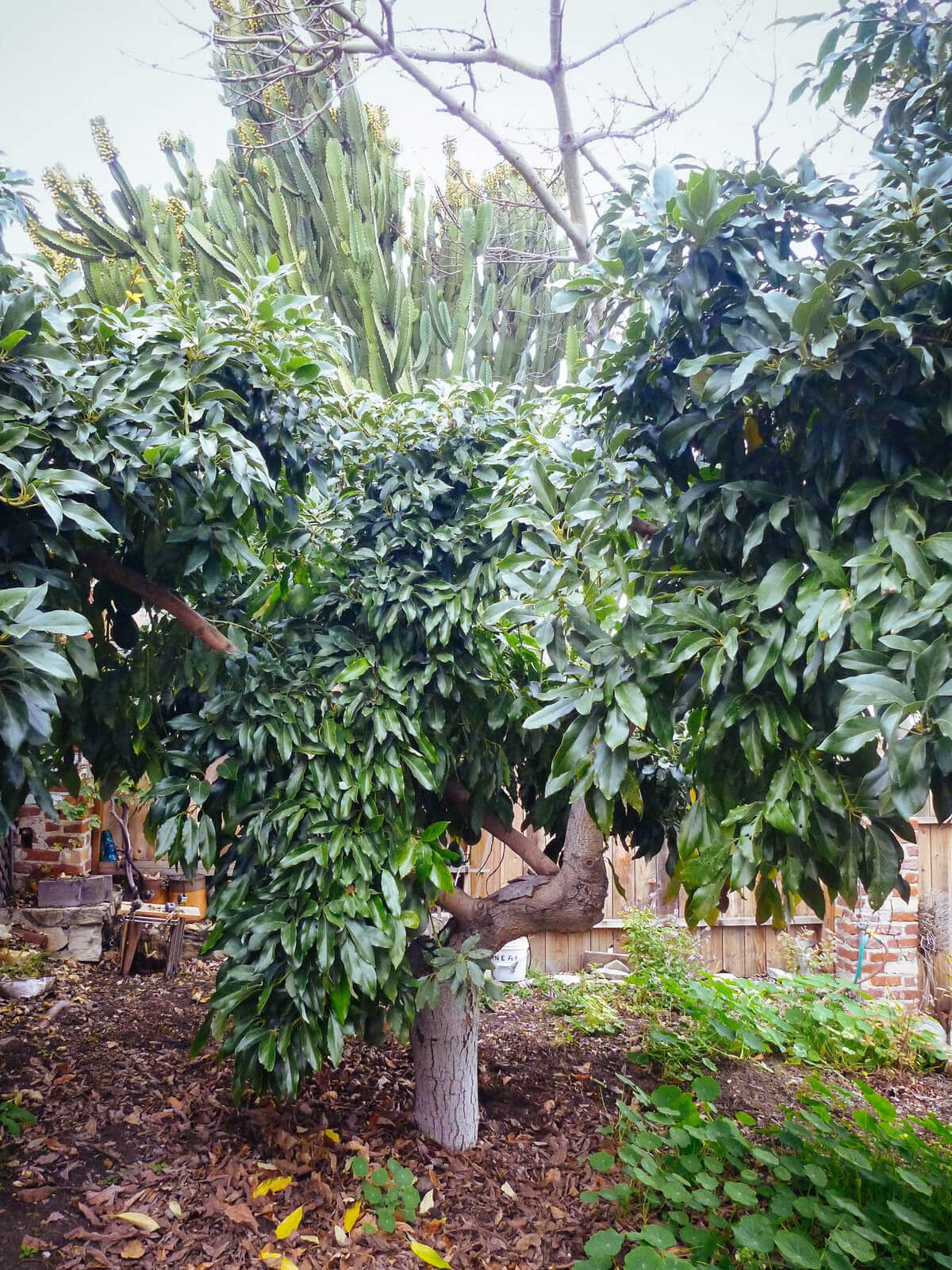
When do avocados mature on the tree?
If you live in California and have an avocado tree in your yard, chances are it’s a Hass (though if you have a very mature tree, like I did, it could easily be one of the eight other varieties grown in the state). And chances are, it’s just dripping with fruit right about now, and you’re wondering when they’ll start to soften.
Don’t make my mistake the first year I moved into my house, and just wait… and wait… and wait… until my avocados started dropping to the ground one by one, over-mature. And definitely don’t pick them before their prime, else you’ll just cut into a piece of rubber that even tastes like rubber (yes, I’ve tried).
So how can you tell when an avocado is ripe on the tree? The short answer is: You can’t.
I know, not very helpful. But wait!
The long answer is, avocados do not ripen on trees. This goes for all varieties, but since there are over 900 of them out there (and 9 that specifically grow in California), I’ll focus on the Hass.
Avocados are unique in that they ripen once they’re off the tree. That means that if you’re not ready to harvest them all yet, the best place to store your avocados is actually on the tree.
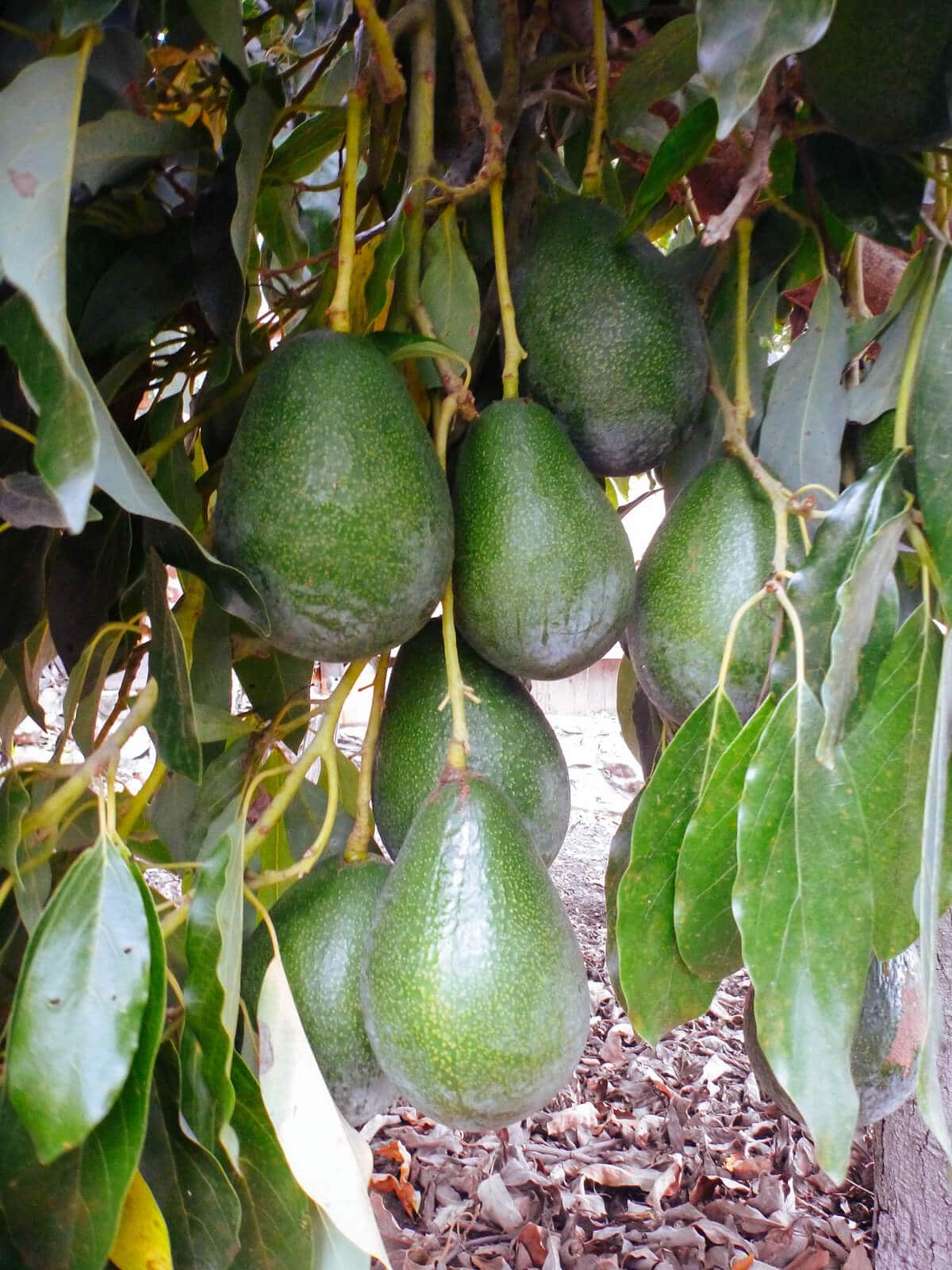
The Hass variety is known for being an exceptional keeper, maturing in winter and continuing to develop its flavor through summer. (Californians are incredibly lucky to have avocados year-round because of this, and in great, cheap abundance!)
Hass avocados start as smooth, bright green fruit. As they mature, their skin turns increasingly pebbly and purplish-black.
The longer the fruit is left on the tree, the higher the oil content and richer the flavor it will develop. But leave it for too long, and the oil inside the avocado will turn rancid and the fruit will naturally fall from the tree (at which point it’s no longer good).
Harvest typically begins in April and goes as late as October. The tricky part is that even among the Hass cultivar, many factors can affect the maturity rate of the fruit, including:
- Climate: Was it uncharacteristically warm that year—or cold?
- Soil: Was it under-fertilized or over-fertilized?
- Bearing pattern: Low yields and late maturity one year—usually due to cold—may result in high yields and early maturity the next year.
Unlike other types of fruit, avocados mature throughout the year—some in spring, some in summer, while others aren’t ready until fall or winter. Different varieties of avocados mature at different rates, and if you know the strain you’re growing, the chart below can help you narrow down the timeframe of when your fruit will typically be ready to pick.
Maturity season of common avocado varieties
| Variety | Season | Color at Maturity |
|---|---|---|
| Anaheim | June to September | Green |
| Bacon | November to March | Green |
| Bonita | September to November | Green |
| Corona | June to August | Green |
| Daily | September to November | Green |
| Duke | September to November | Green |
| Dickinson | May to October | Dark purple |
| Edranol | April to July | Green |
| Fuerte | November to June | Green |
| Hass | April to October | Black |
| Hellen | June to September | Green |
| Jim | October to January | Green |
| MacArthur | July to October | Green |
| Mesa | May to July | Green |
| Nabal | June to September | Green |
| Pinkerton | December to April | Green |
| Reed | July to October | Green |
| Rincon | April to June | Green |
| Ryan | May to June | Green |
| Santana | September to February | Green |
| Zutano | October to March | Green |

How to tell when an avocado is ripe
The best way to tell whether your fruit is ready for harvest is to pick one nice, large, dark avocado from your tree, and then leave it out on the counter at room temperature.
At this point, the thing is rock hard. You can practically use it as a pestle for your mortar, or even a weapon for self-defense. Have you ever dropped an unripe avocado on your toes? Oy, it’s not pleasant.
If the fruit softens evenly within a week or so, then the rest of your avocados are good for the pickin’. If the fruit turns rubbery, shrivels up, or tastes bitter, then it isn’t quite ready yet.
Keep checking every other week by picking one fruit at a time until you find an avocado that ripens to the right consistency and flavor of your liking. Once your avocados come into season, continue picking them regularly so they don’t over-mature on the tree.
How long does it take for an avocado to ripen?
The period from when an avocado is picked from a tree and when it’s perfectly ripe and ready to eat is called “softening.”
The softening process takes anywhere from a few days up to a week, depending on room temperature and storage conditions. If your avocado is still rock hard after 10 days, chances are, it hasn’t fully matured yet.
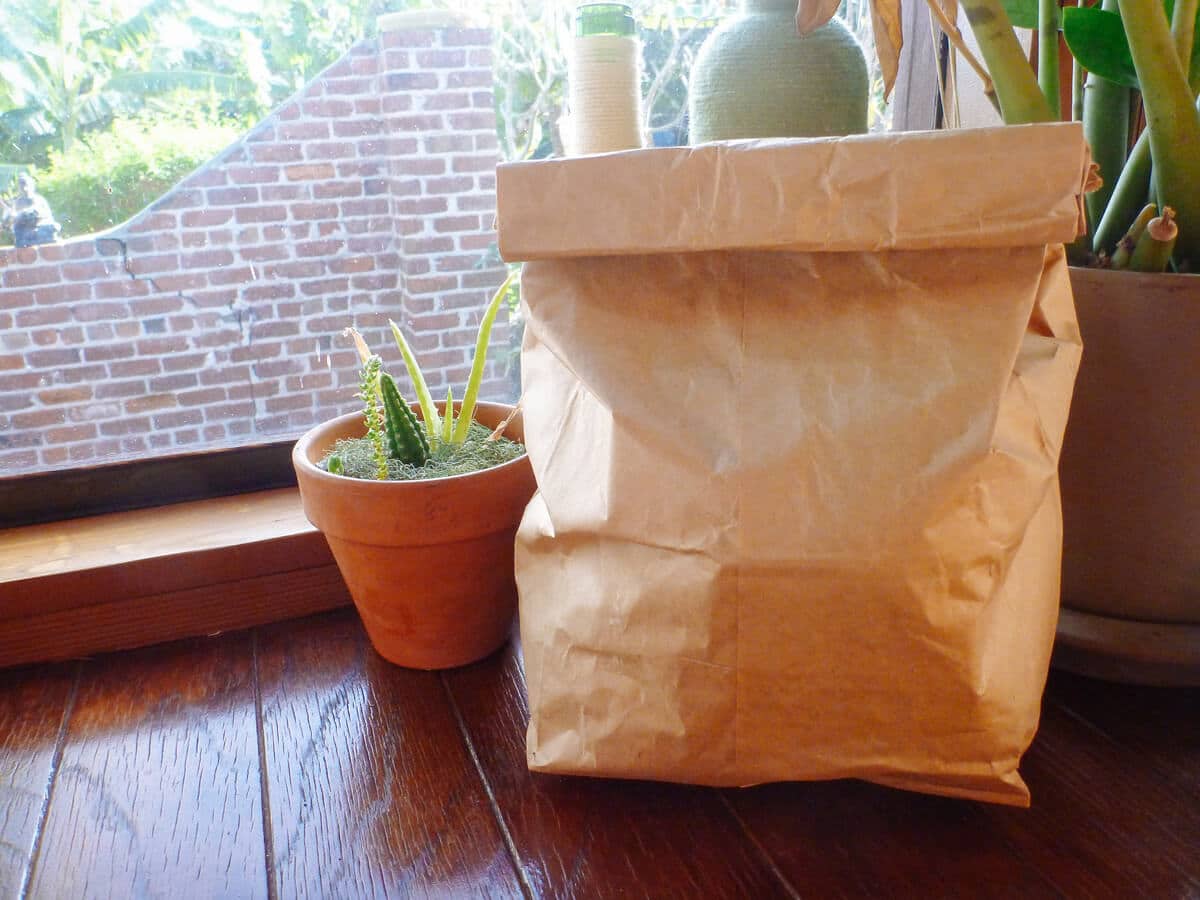
How to ripen avocados faster
You can speed up the ripening process by placing your avocados in a paper bag, which helps them ripen sooner by trapping the natural off-gas that they generate (an odorless, tasteless, active plant hormone called ethylene).
Avocados are climacteric fruits (right up there with apples and bananas), meaning they start to ripen off the tree through a process of ethylene production, which occurs when starch converts to sugar. This stage of climacteric signals the peak of ripeness for an avocado.
If you want to speed it up even more, you can stick an apple or banana inside the bag (or any other ethylene-producing fruit, such as peppers, peaches, tomatoes… whatever you have on hand).
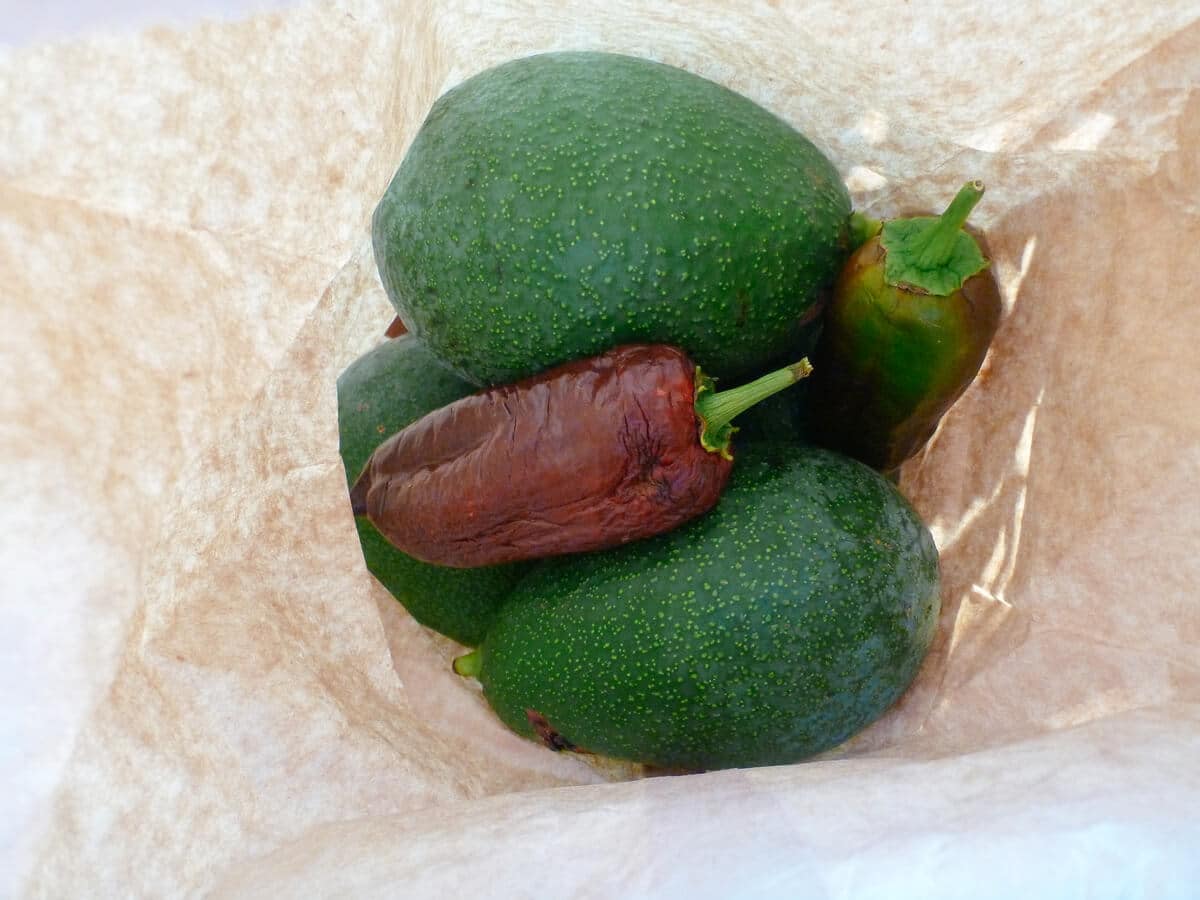
The “gas chamber” created from having all these fruits emitting ethylene together will ensure your avocados ripen in just a few short days. The skin will turn darker (almost black) and become bumpier.
To check for softness, feel the fruit around the base of the stem—there should be a slight give. I also like to wrap my whole hand around the fruit and feel for a uniform suppleness.
Avoid feeling up the fruit with your thumb, as the pressure can leave ugly brown spots on the flesh. You can also tell an avocado is ripe if its stem pulls off easily.
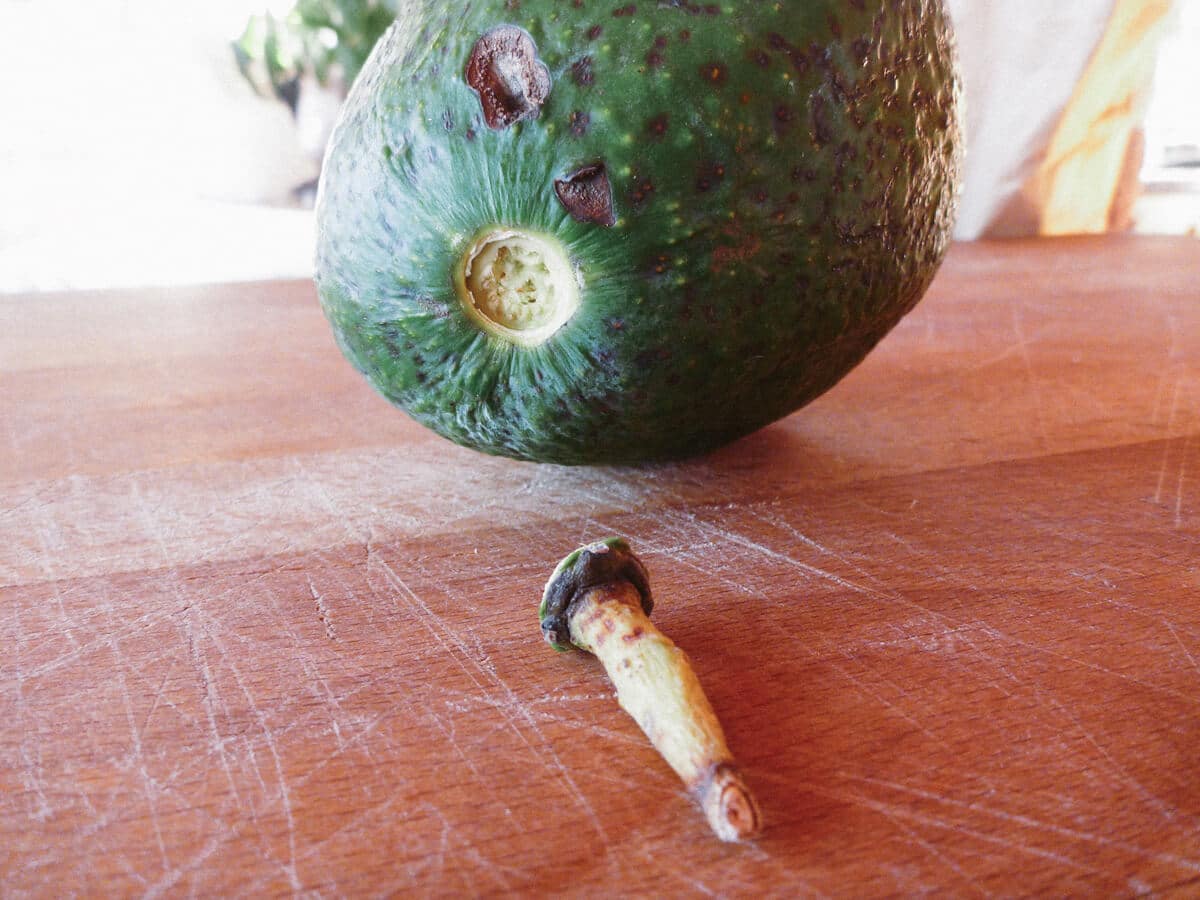
A perfectly ripe California avocado is rich and nutty… creamy and velvety… practically melting in your mouth. It’s a pure and simple slice of California gold!
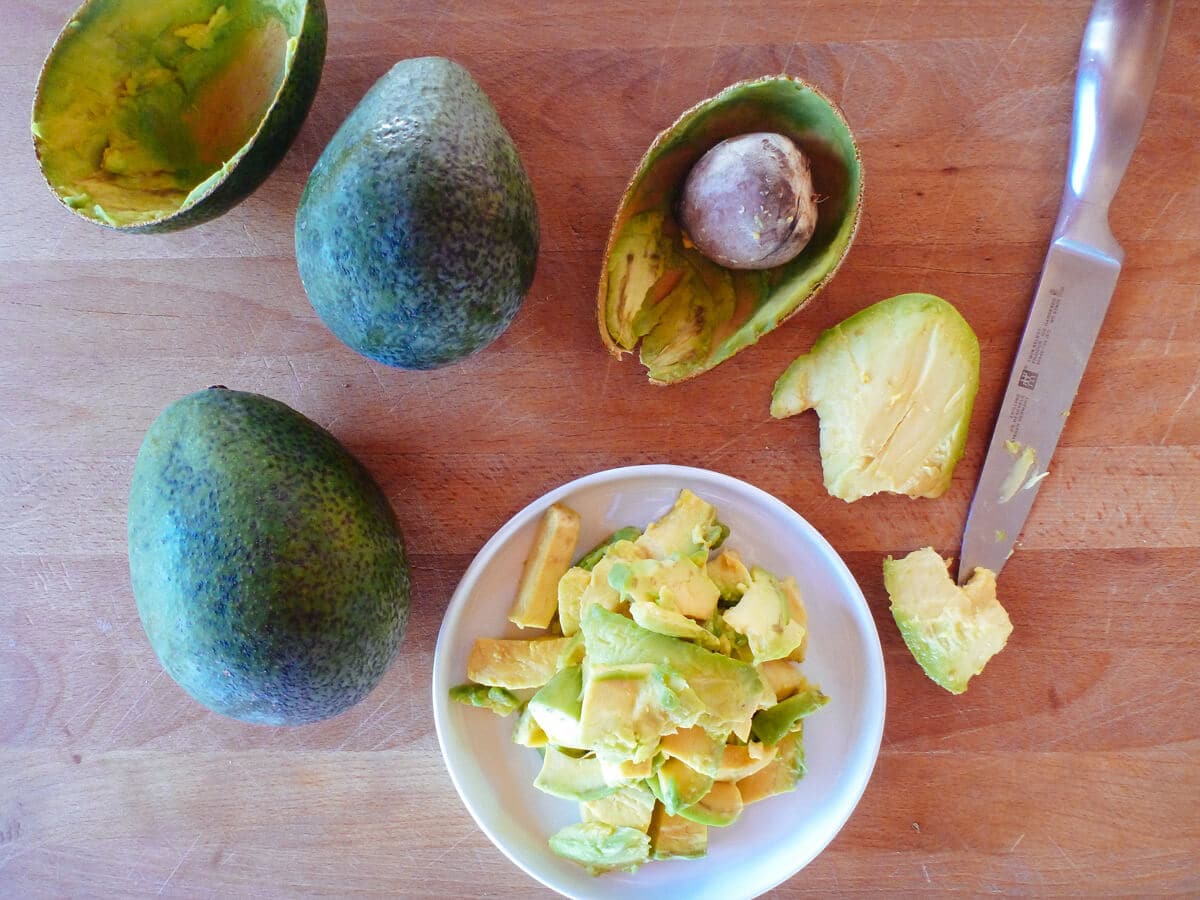
This post updated from an article that originally appeared on February 25, 2013.
View the Web Story on how to tell when avocados are ready to pick.


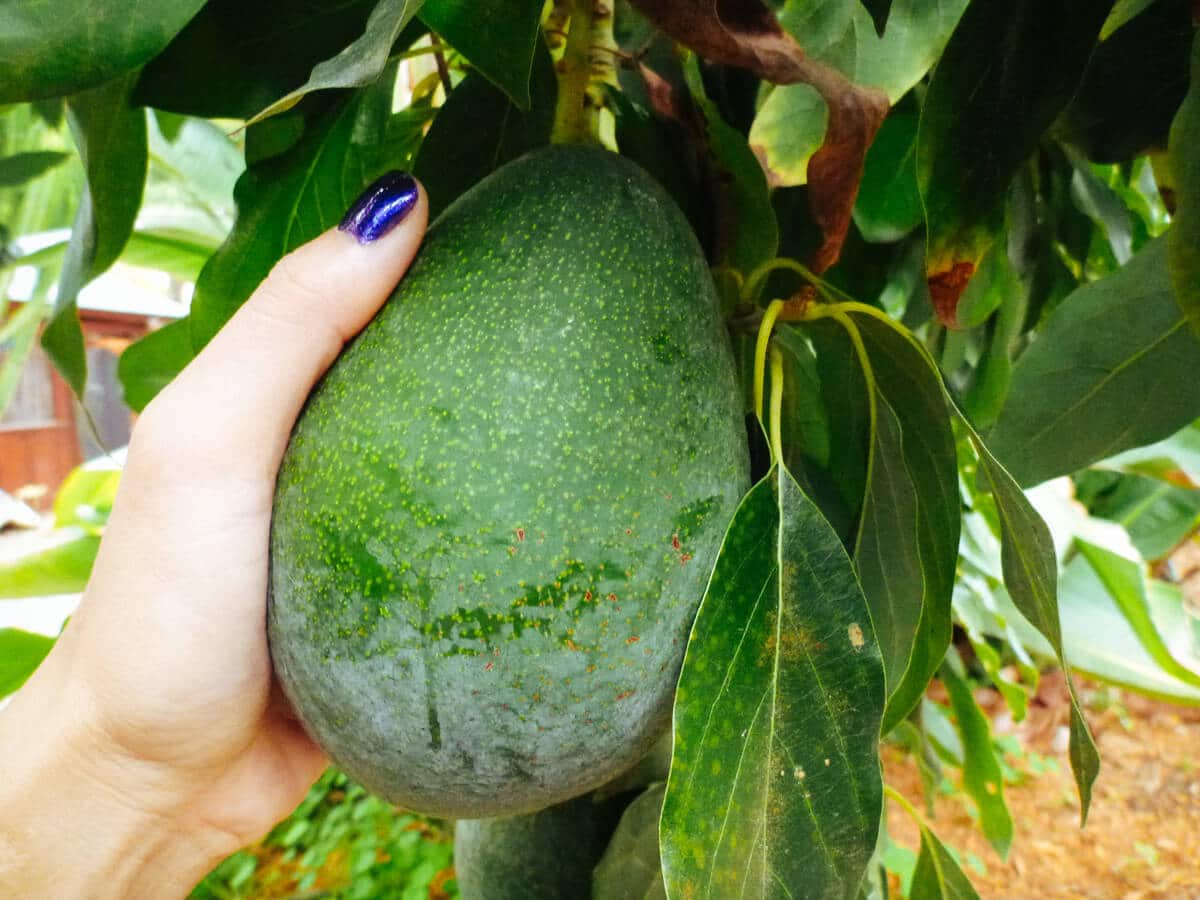













I have 3 small avocado trees planted, (I guess bought specifically at a nursery, a small twig tree). Now they are very tall and full like a real tree but I see no fruit on any of these trees or any little lumps. I wonder about the pollination, did the bees do their job? How long does it take for an avocado tree to go from a spig to bearing fruit? I’m sure it is years but how many?
I am in San Diego, and this is the first year my tree started growing avocados. They grew over late summer/autumn, and are now quite large on the tree. I will try picking one to test, as you said. I haven’t seen any articles, including yours, about harvesting in mid-December. What are your thoughts on harvesting in December/January in SoCal?
We grow numerous varieties of avocados in The Bahamas but the favorite is a huge smooth-skinned variety with a huge seed. The flesh is firm and very very tasty. When the fruit is full and you pick it, we soak it into a pot of salty cold water for about 10 minutes then dry it off and within three or four days it is ripe. Sometimes one or two of them develop water inside. I didn’t know the water logged ones could still be eaten, so thank you for the info. Also, we determine they are mature when you can hear the seed being shaken around inside the green fruit. We eat avocados with everything when in season.
Thank you for this article, we bought 4 grafted Avocado trees that will fruit in a few years. In the meantime I’m reading up on everything avocado. Thanks for all the facts and the story about Mr Hass. Very enjoyable.
Late reading this but hoping for help. I’m in Corpus Christi, Texas and new to avocados. Our tree has enormous fruit, about 7-8 inches long, 4-5 inches in diameter, and bright green. I don’t know what variety it is!? Could it be a “Doni”? Do they get picked in Jan/Feb?
It’s January now and they haven’t dropped so I’m wondering when to pick one?
Help would be much appreciated, thanks.
The best way to check what variety it might be is to ask your local co-op extension service what the most common avocado trees are in your area. It’s the only way to tell when your avocados start maturing (other than simply sitting back and watching when they drop, if it’s your first season with the tree). Avocados drop when the oils inside turn rancid, so you’ll have some indication of when they’re actually ready before that.
If they are green on the tree, does that mean they are still unripe? Should I wait until they turn black before picking one?
Not all avocados turn black when ripe. You really have to go by feel. And as explained in the post, avocados do not ripen on the tree. They start to ripen once you pick them (but only if you’ve given the fruit enough time to mature first).
My avo tree in Cape Town bears pear-shaped fruit with a thin skin. It drops fingerlings almost all year round; they’re about the size of a cocktail sausage. I found out that if the ‘drop’ fruit is kept 3-4 days, it develops to the point that one can glean enough to spread on a sandwich or make a small bowl of guacamole. It doesn’t get any bigger, but tastes fine, tho the end may be hard, in which case I just discard it. There is no pip,
just a dark thread where it will develop. This form of ripening means I can enjoy some avo way out of season.
At present, I’m visiting my cousin in Montevideo; she has an immense tree, but the fruit has the alligator-skin and is shaped like cannonball. I tried ripening some of her many dropped immature avos, but altho the skin turns from bright green to black, they remain rock hard& unpalatable.
Any comment or info on the different path of maturing of these two varieties, or others?
I’m not familiar with the avocados you describe in Cape Town, but the ones in Montevideo sound like varieties I’ve seen in California. If those avocados drop before they’re mature, they will not ripen; they’ll simply darken, shrivel, and stay tough and rubbery.
I believe you are talking about the Fuerte avocado, they do produce small seedless finger shaped Avon and they are the same meat as the regular Avon just that they were never pollinated so no seed.
Any suggestions on how to stop squirrels from eating the avocados on the tree?
You can try a plant cage, bird netting, or some other physical barrier. At one point we covered each avocado with a brown paper bag to deter them, but it’s not entirely squirrel-proof as they may learn to chew through the paper. Good luck!
They will eat super hard unripe avocados?
They’ll take nibbles on every piece of fruit if you let them! They can also knock immature avocados down from the tree.
So I recently moved into a house with THREE mature avocado trees covered in fruit. They fruit was very small when I moved in in June, but they’re getting big now. We are having strong Santa Ana winds, and several avocados have fallen out of the trees. I don’t know how close they are to being ready, they’re a bit small (but much fatter than the ones that have fallen off before now). I’m going to set them on the counter and see if they ripen up…
I’m just now reading this, 3 years after posted! THis is such a great article! We moved into our new home two weeks ago and have a 35ft. avocado tree so I’m trying to do as much reading and research as possible so I can have avocado and guacamole for life!!!!! Thank you!
Whoa, 35 feet! That’s a whole lotta guac. 😉
I do not know all the kinds of Avocados but yours look different from my Hass, and I had a fuerte that was more pear shaped and ripened off the tree in large blotches before it was good enough to eat . But I know different areas and conditions dictates much of the final result.
Just one thing I was told from a grower was not to over water the tree and if the bark is spiting at the base, that is the warning sign of overwatering
Are those avocado in the picture fuerte? Even the picture of the tree hints that it is a fuerte. Lovely fruits and tree.
I don’t actually know. Our avocado tree is at least 40 years old.
I’m 80% sure the tree is fuerte. If the fruits mature during the fall, still green when ripe, and is mild,creamy then add another 10 percent. Thanks for sharing. Your website is awesome.
The fruits actually mature in late winter (typically February) and we pick them through summer.
Yup looks like a fuerte to me. I have a mature fuerte. Fruit is best starting after first of year. Hass has a different harvesting time.
Great information just the same!
Surely you have misspelt the name…. Haas not Hass.
Hi, it’s Hass avocado, named after Rudolph Hass who developed it (see the story in the post). Sometimes it’s marketed as a Haas, but that’s a misspelling of the name.
We have an Avocado tree out front and we almost cut it down to plant a Mango Tree. Today we found four Avacadoes growing on our tree. I am so excited!!!
Our avocado tree was only producing a handful of avocados when we first moved onto the property. Four years later, we’re inundated with them! So, patience. And lots of love and care. 🙂
Thanks for the in-depth info. There is a big tree outside of where I am living in Puerto Rico that started to produce avocados about a week ago and I cannot wait for them to be mature.
Thanks,
Andy
BackpackingDiplomacy.com
What recommendations do you have to inform residents over the phone if there avocado trees have matured for picking. We’re a non profit program, http://www.harvestcrops.org with the need to communicate so we don’t pull the fruit too early or too late when we arrive as a group. The window of opportunity.
It’s hard to say because there are several different varieties of avocados in Southern California, and they all mature at different times of year (some summer, some winter, and others in between).
Awesome, helpful and so darn interesting. Thank you so much!!
What a great post full of helpful information! You are so lucky to have a backyard avocado tree.
Thank you!
Thank you for all the tips. We have a dwarf mandarin that went back to stock and are replacing it. Maybe, an avocado tree? 😉
Try a dwarf avocado tree if your limited for room.